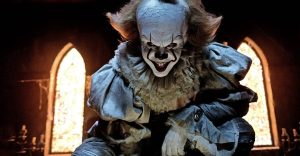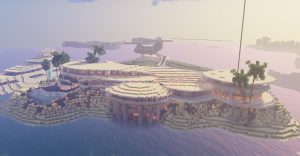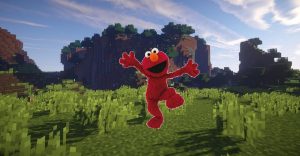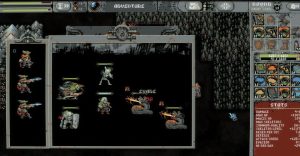Lorelay Bové Interview: Encanto
In Encanto, Disney explores what bonds a family together beyond blood. The upcoming animated film, arriving in theaters on November 24, takes on the ambitious task of following a magical casita in the mountains of Columbia with over ten members of the Madrigal family, which spans generations over its runtime. Each Madrigal child is given a special gift by their mysterious home at the age of 5, and they must use it to help their community flourish.
Each child except sweet Mirabel (Stephanie Beatriz, In The Heights), that is. Though bright and kind-hearted, Mirabel was inexplicably skipped over when the time came to be imbued with power. Since that day, she has carried on trying to establish her place in her vibrant community – but when their home is in danger, it may actually be her turn to step up and take the reins to save the day.
Associate Production Designer Lorelay Bové, who has been with Disney since The Princess and the Frog, spoke to Screen Rant about the research that went into making Encanto feel authentic, and what she took away from the unique experience.

Screen Rant: How was the concept pitched to you, and how early on in the process did you start preparing to work on this?
Lorelay Bové: I started on this project at the end of 2017, as soon as they were starting to make this film. It was right before their research trip, and then afterward, I started working more on it. But it’s been a long journey, for sure.
I started exploring some of the characters earlier on. They knew they wanted a diverse extended family from Colombia, and they knew they had a magical house that had a character, and they knew that they had a main character that had no gift – as opposed to the rest of the family. That was earlier on.
The main concept was always sort of set in stone, and then we started exploring the characters and the world and so forth.
How does the fact that it’s such a large extended family, each dealing with their own arcs and even rooms in the house, affect your approach to the story?
Lorelay Bové: For the production design side of things, it was very exciting, because we would do a lot of different designs and a lot of different colors and patterns and things like that. But it’s very challenging to think about visually.
I shared a guide that I created early on, and that I evolved as the movie was going in because there were changes in characters: who was who, and their color or their ethnicity, and all that. It helped us to track the color and shape language, and it just helped to organize our brains in production design. Same thing with the environments. It was looking at the character and tagging a specific color to that environment or thinking about their magical doors, which are an iconic character motivation, with the iconography of each character.
It was a lot to follow and to track, but I think that the directors did a beautiful job with their arcs and [let] everyone fall in love with these characters.
As a Latina myself, I love seeing so much diversity in the community – which is something that’s often overlooked – and so many specific callbacks to Colombia. How much of that came from the research trip, and how much required you to do your own research outside of what they brought back?
Lorelay Bové: We always, in the art department, will always do research no matter what. Before we start drawing, there’s always a research page – at least I share with the directors before I start, to make sure that I’m in line with their direction. That way, there are [fewer] drawings that go to waste.
Early on, we would do our research and we would start designing. Then we would have the amazing consultant group that we had – which was an amazing resource and help that we had each week, or whenever we needed – to make sure that it’s in line with whatever we were designing from the region or from Colombia. And it was different groups: we had architects, we had botanists, we had the cultural group, we had an anthropologist.
There were a lot of experts in different areas, as well as our main consultant generalists, Juan and Natalie, which oversee the whole thing to make sure that everything was in line with more modern Columbia so that modern art audiences can relate.
I know you previously worked on Zootopia. What was that collaboration like with the Encanto directors, especially Jared and Byron?
Lorelay Bové: It’s interesting because, on Zootopia, I was just additional visual development – which is three weeks of help. Not a lot; doing fonts, really. So, this was my first time getting to know the directors and getting to collaborate with them from day one until the end.
It was a pleasure being able to know them and to know what they like. Trying to figure out what they like is kind of what we do; we always do designs and try to sell it to the director to make sure that it’s in line with our vision. It was an amazing experience, and they’re just so fun. It’s such a fun group of directors.

I believe this is your first time as an associate production designer. What did you most take away from the experience, or what prepared you most for that role?
Lorelay Bové: I was lucky to partner with Ian Gooding, the production designer. He was my mentor when I started at Disney on Princess and the Frog, so it was amazing to be able to work alongside him. In case I didn’t know something, I was able to ask him and be guided because there were a lot of things, and downstream departments that were very new, pipeline-wise.
I learned so much about each of the different departments, being able to communicate with them through visuals, references, and everything. Communication is a big part of this job. There’s a lot of moving pieces, and it was that challenging – but at the same time very fulfilling, because we have a beautiful-looking film.
There are so many different members of the Familia Madrigal, and they each bring something different to the table. Do you have one that you most relate to, or whose power you would most like to have?
Lorelay Bové: Everyone will relate to Mirabel, for sure. I relate to her because she’s got no power. But I think if I would want one, I keep wanting Pepa’s power over the weather. I love sunny skies, so I would try to be happy all the time.
Lin-Manuel Miranda has such iconic music. How did his songs and collaboration with Germaine Franco inspire your work?
Lorelay Bové: We would have to listen to all the songs before we do the color script. So, for sure, it inspired a lot of the work that we did. We had the songs to show the color of the songs and the design of a lot of them; we were listening over and over and over.
One of the songs I worked on the design and color for was Luisa’s song, for example. I was listening to the music, and it was with Lin’s voice. Earlier on, we didn’t have the cast yet, so a lot of the songs that we listened to in the art [department] for the color were by Lin.
It was amazing because, at some point, I was so used to Lin’s voice that it was very odd to listen to the new cast. It was definitely inspiring because we needed that piece to be able to do our work. And they’re definitely beautiful songs.
Encanto opens in theaters on November 24.
- Encanto (2021)Release date: Nov 24, 2021
About The Author

















